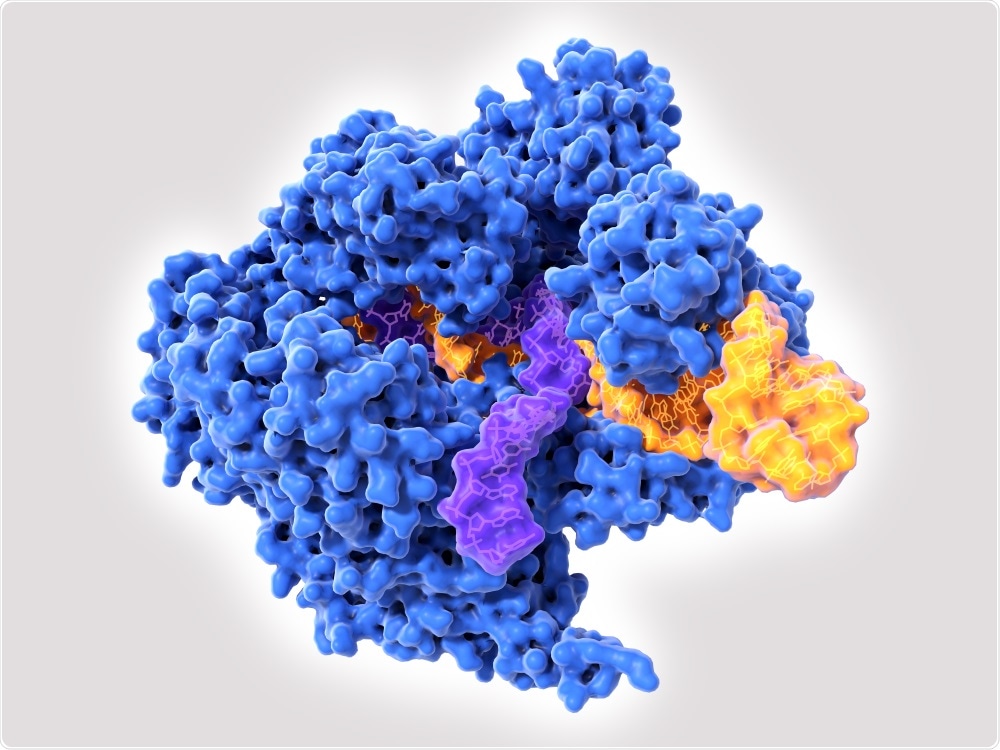The ability to edit genes within living cells and organisms at all levels, using tools like the well-known and powerful CRISPR-Cas9, is one of the most sophisticated and useful advances in modern biology. However, the technique has been limited by a myriad of safety concerns.
Now, scientists at the Salk Institute have developed a potential game changer in this field – a new gene editor called SATI (intercellular linearized Single homology Arm donor mediated intron-Targeting Integration). This tool addresses multiple limitations of existing gene editing platforms.
The study was published in the journal Cell Research on August 23, 2019.
 Juan Gaertner | Shutterstock
Juan Gaertner | Shutterstock
It is not easy to change the genes within a living organism without causing harm. CRISPR-Cas9 can cut the DNA at a defective site and allow a new gene copy to be inserted, but in the process any number of inadvertent alterations could occur around the edges of the spliced segment, the effects of which are unknown and potentially lethal. Non-dividing cells are also notoriously difficult subjects for gene editing – but they make up most of the body’s tissues.
SATI is itself an advance on a new form of gene engineering also developed at Salk, called homology-independent targeted integration (HITI) which can introduce new genes into the DNA without having to cut out the old one. The technique uses an alternate DNA repair pathway to integrate the new DNA.
HITI, however, could not correct all mutations since it is not able to remove the defective segment from the DNA strand.
We sought to create a versatile tool to target these non-coding regions of the DNA, which would not affect the function of the gene and enable the targeting of a broad range of mutations and cell types.”
Mako Yamamoto, Senior Author
SATI uses either of two different types of DNA repair mechanisms to integrate an inserted DNA segment into the genome. This makes it much more versatile and less error-prone.
It can be used to fix different types of mutations, whether they involve the removal, replacement or addition of a part of the DNA strand, in a diverse spectrum of cells, in both dividing and non-dividing states.
Moreover, its target is the noncoding part of the DNA and thus it minimizes the possibility of introducing unwanted changes in the genome. Scientists hope to eventually use SATI to prevent genetic conditions like the neurologic disease called Huntington’s chorea which causes progressive paralysis and death, among others.
Normal DNA repair mechanisms will ensure the inserted minigene becomes part of the organism’s genome alongside the defective gene. It can thus exert the normal effects of the target gene without ever disrupting the rest of the genome, significantly reducing the harmful effects of the mutation. This is called “knock-in.”
Developing the technique
The scientists used a mouse experimental model which showed the effects of a single change in amino acid sequence within one specific protein, caused by a single point mutation where one nucleotide in the LMNA gene is replaced or deleted. This caused the mouse to show signs of aging very early in its lifespan, a syndrome called progeria. This mutation was not easily repaired with current genome-editing tools.
Using SATI, the researchers successfully inserted a good copy of the defective at the targeted site in a noncoding segment of the DNA, leaving the body to incorporate it into the normal DNA strand. This acts to produce the normal protein product, correcting the basic defect in progeria.
They found that the gene began to function normally, reversing the signs of aging, and increasing the lifespan of the mouse by 45%. In human terms, this is the equivalent of 10 more years of life!
From this successful proof-of-concept experiment, the scientists conclude that this method can be used to edit the genome for a wide range of applications. They plan to further refine and extend this technique, to enable its use in more cells at a time. They look forward to even better results as the procedure is optimized.
Further Reading
Journal reference:
Suzuki, K., et al. (2019). Precise in vivo genome editing via single homology arm donor mediated intron-targeting gene integration for genetic disease correction. Cell Research (2019). https://doi.org/10.1038/s41422-019-0213-0.